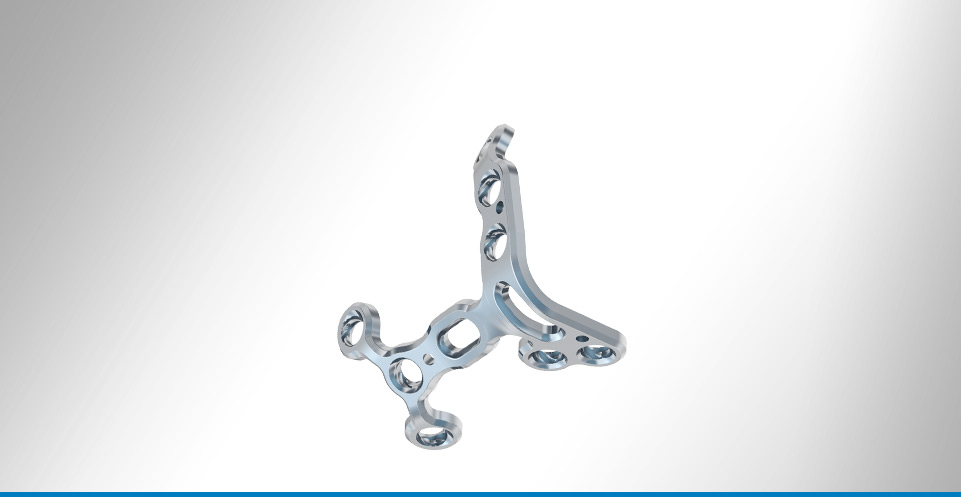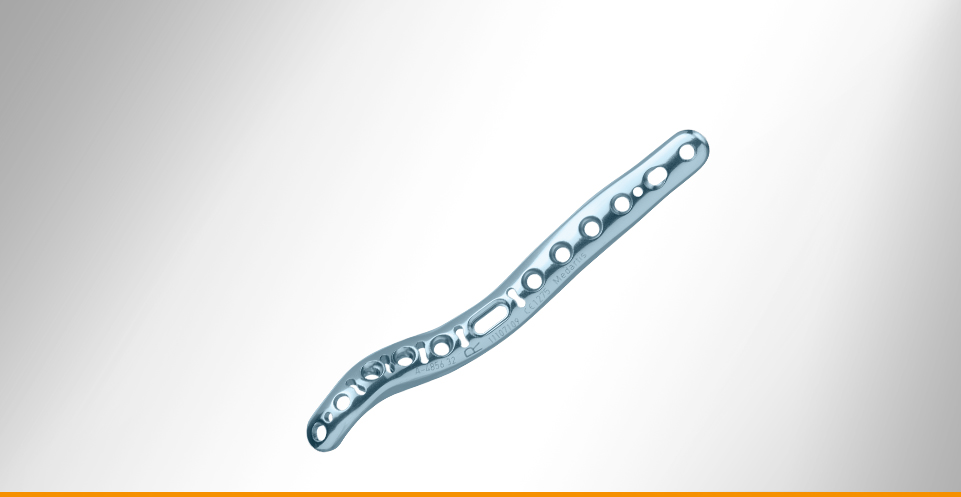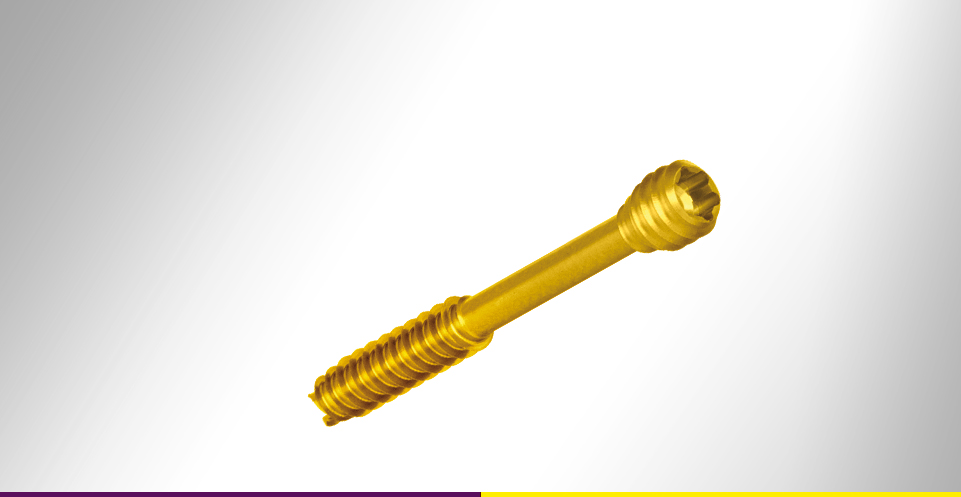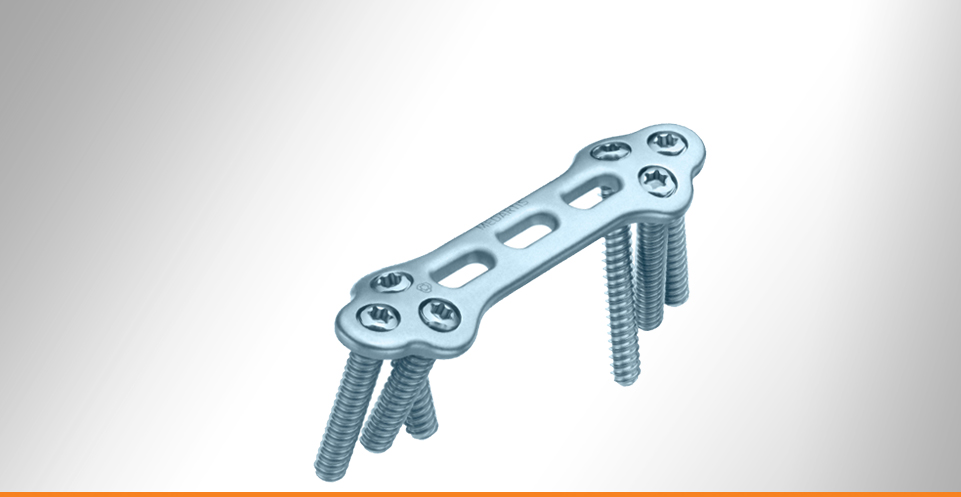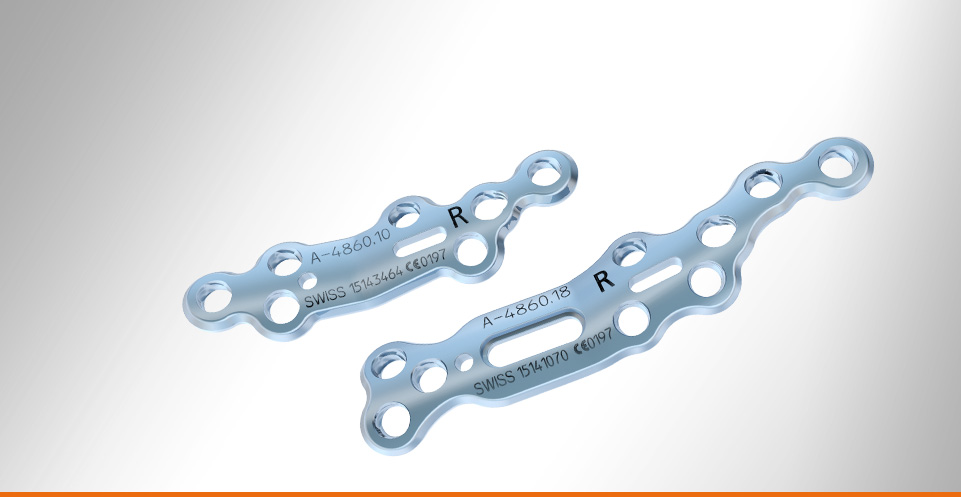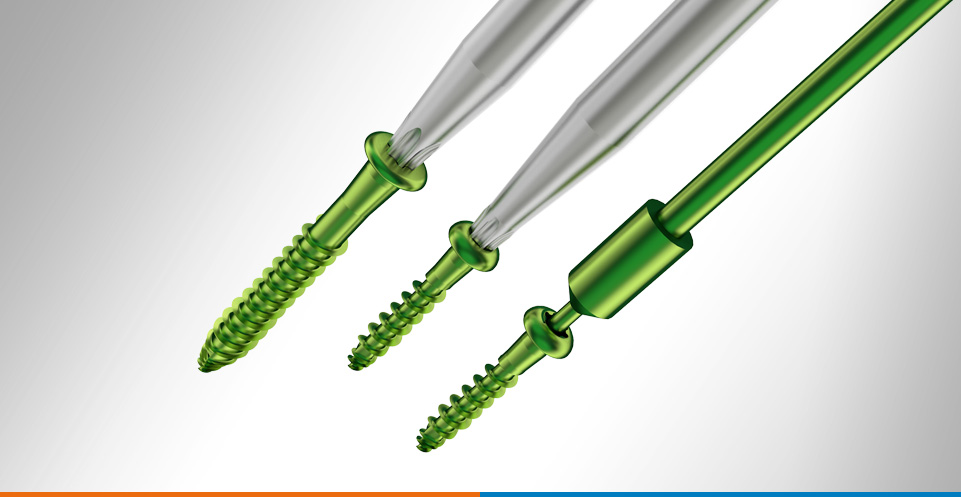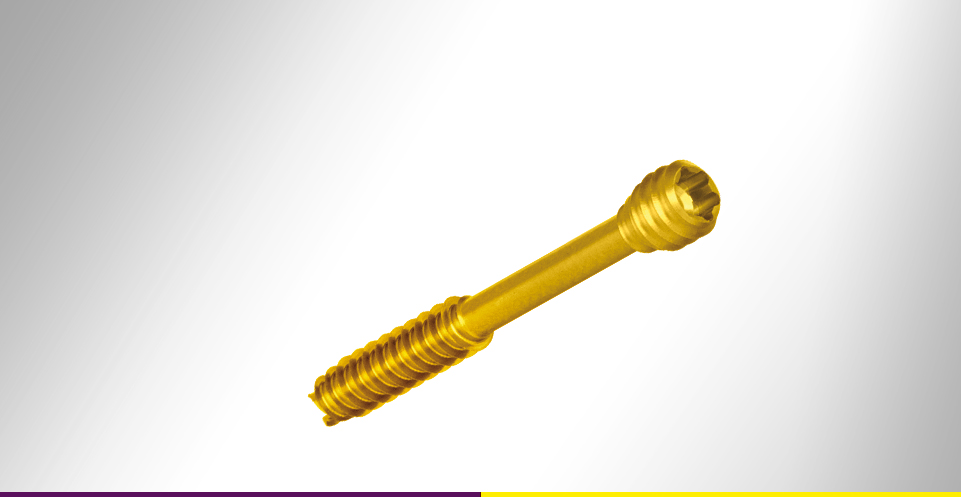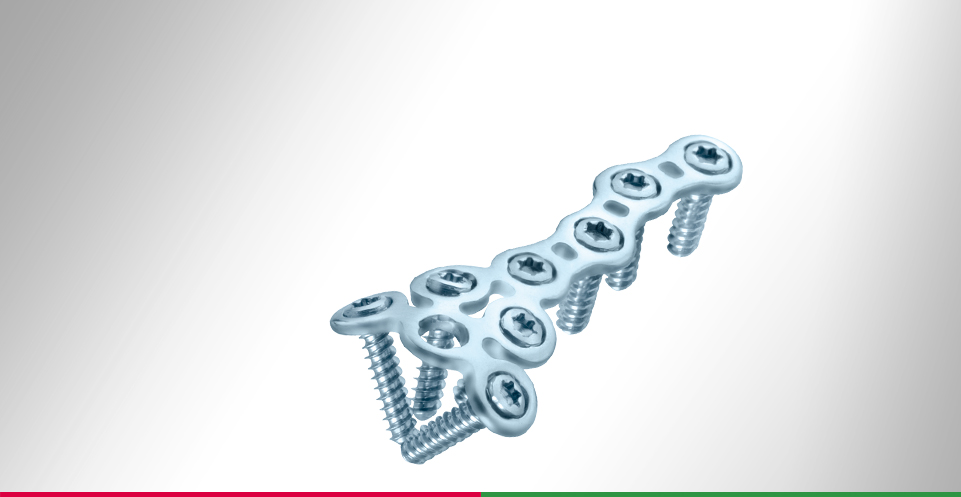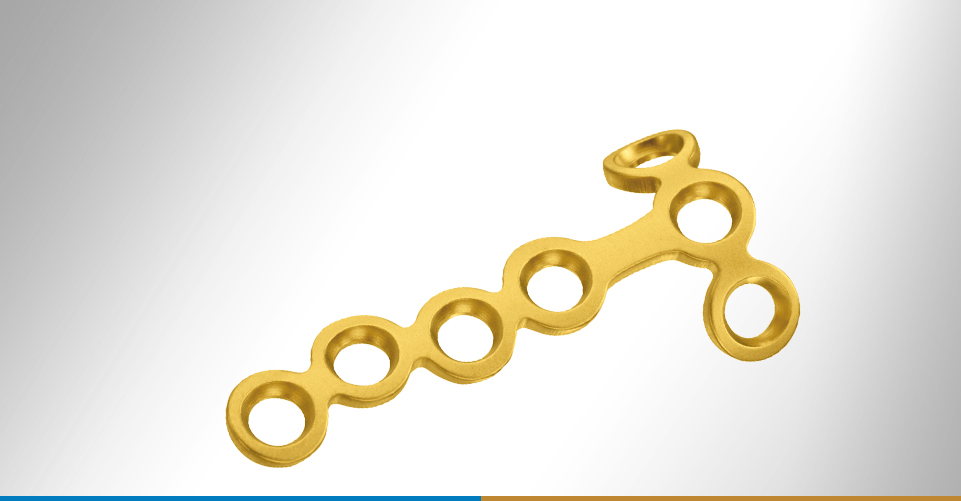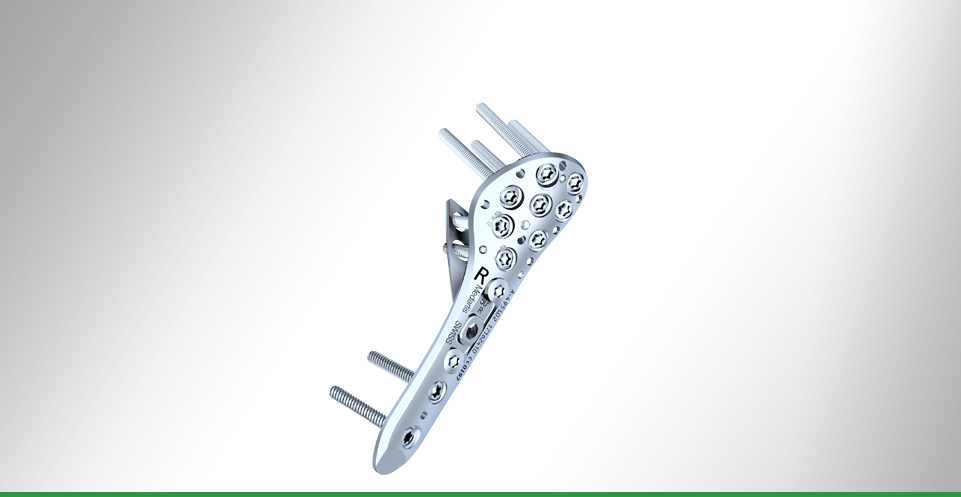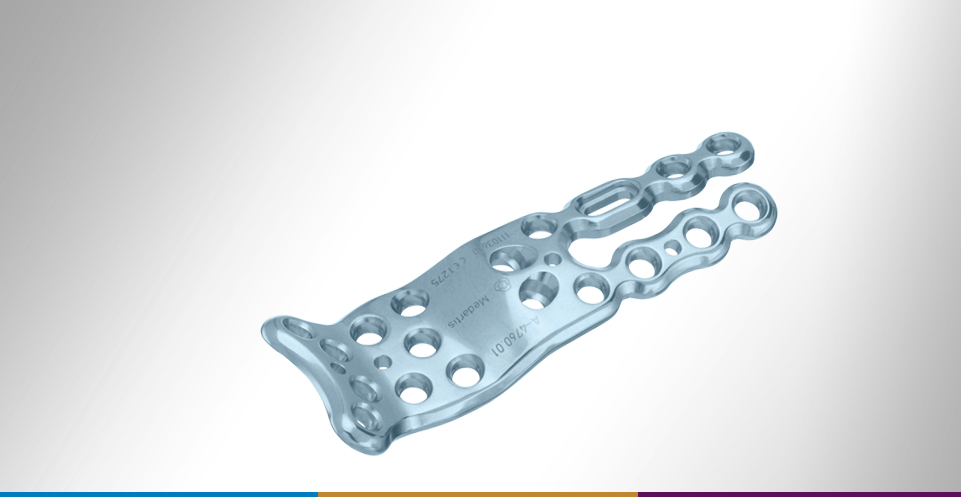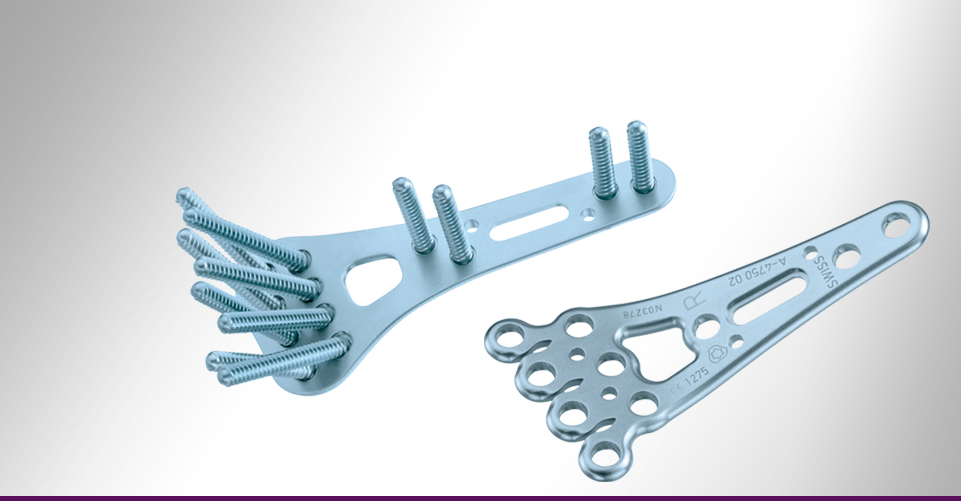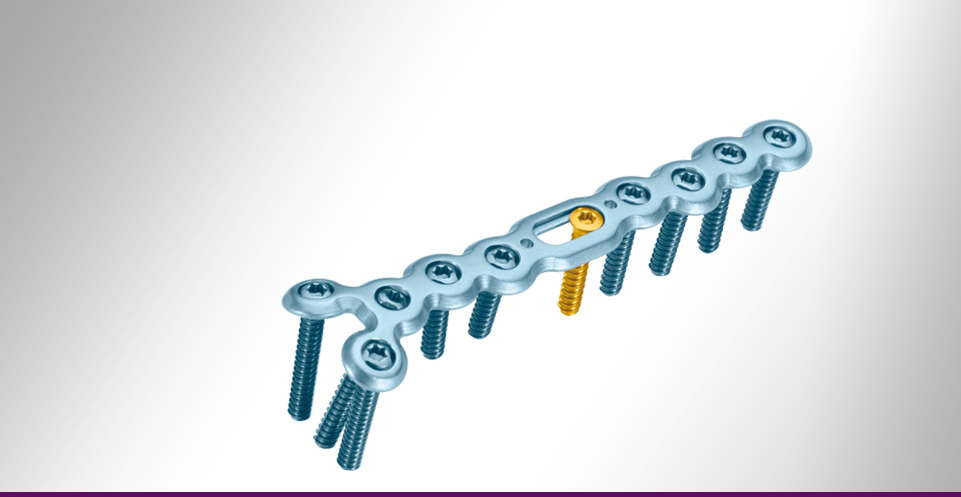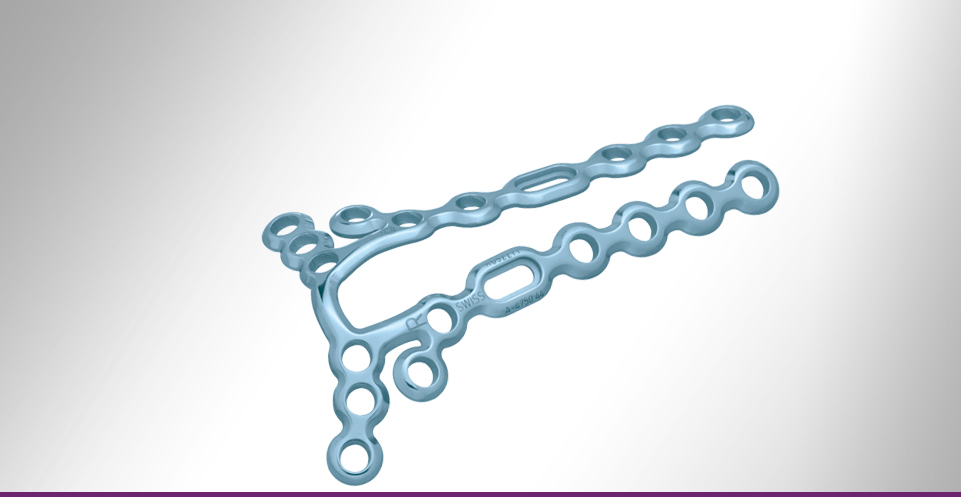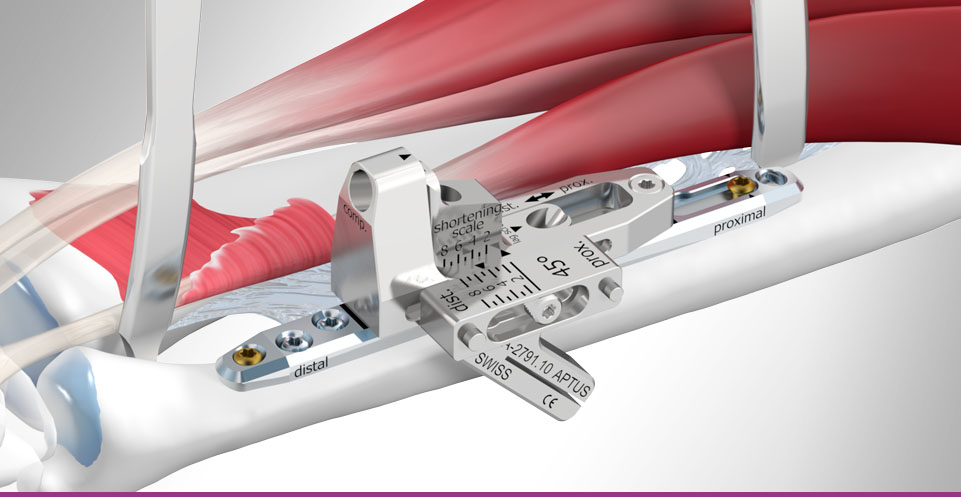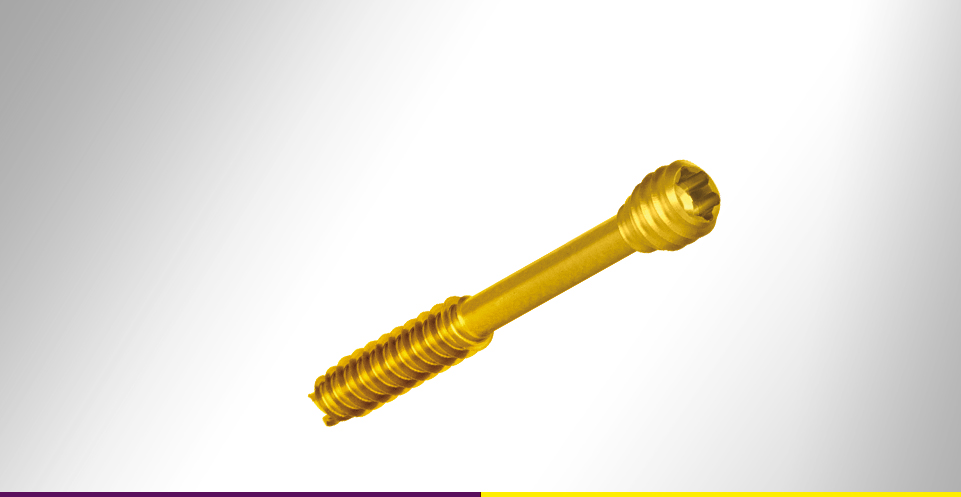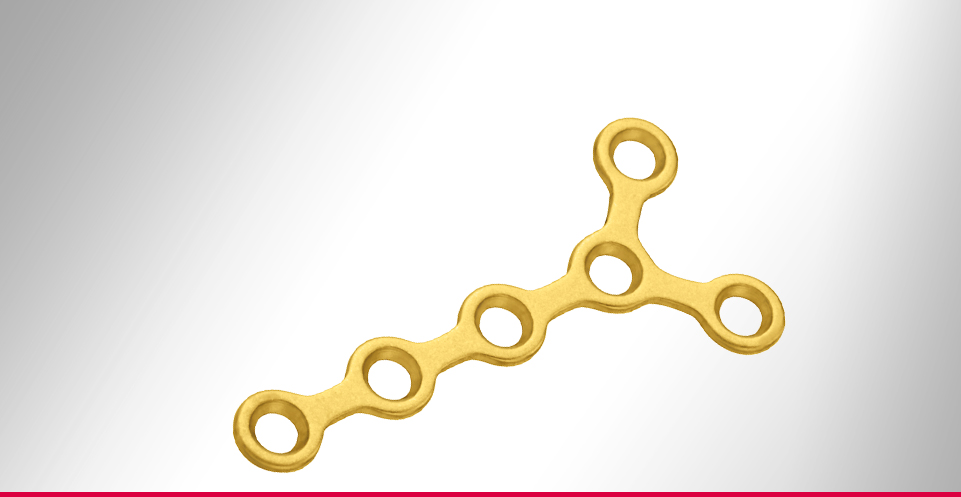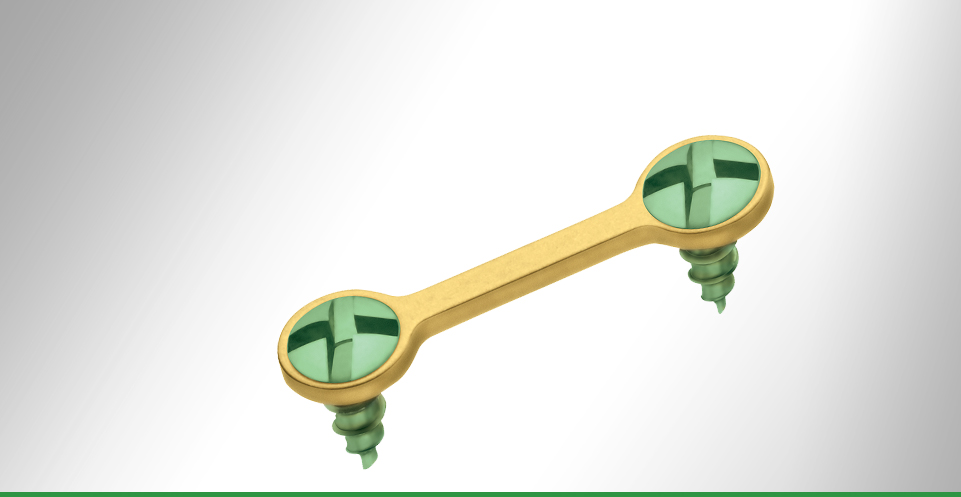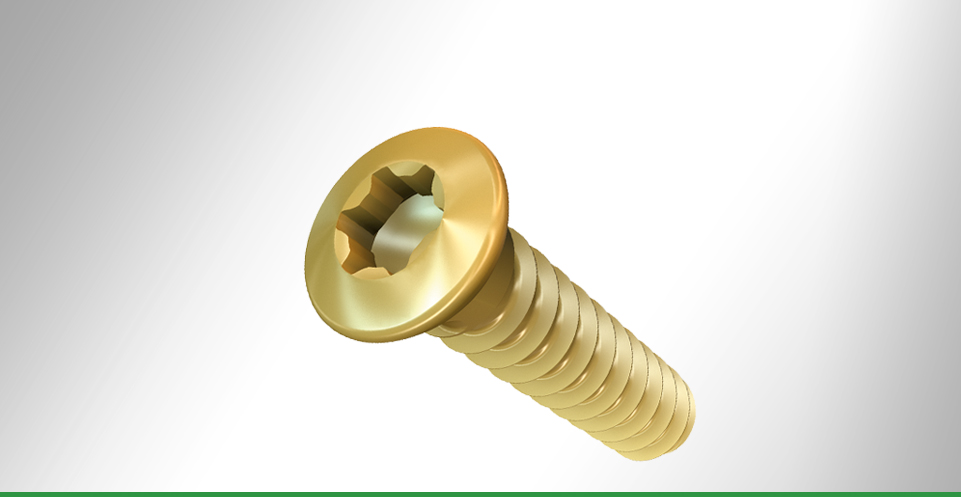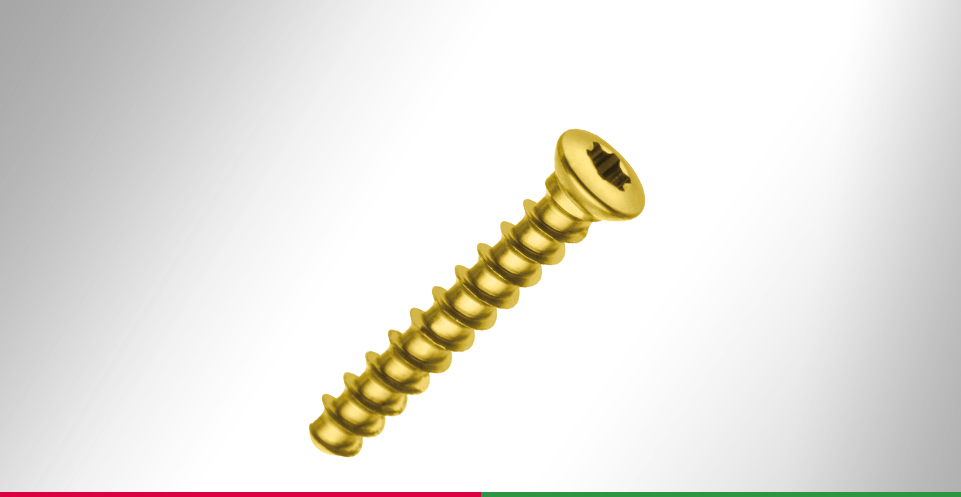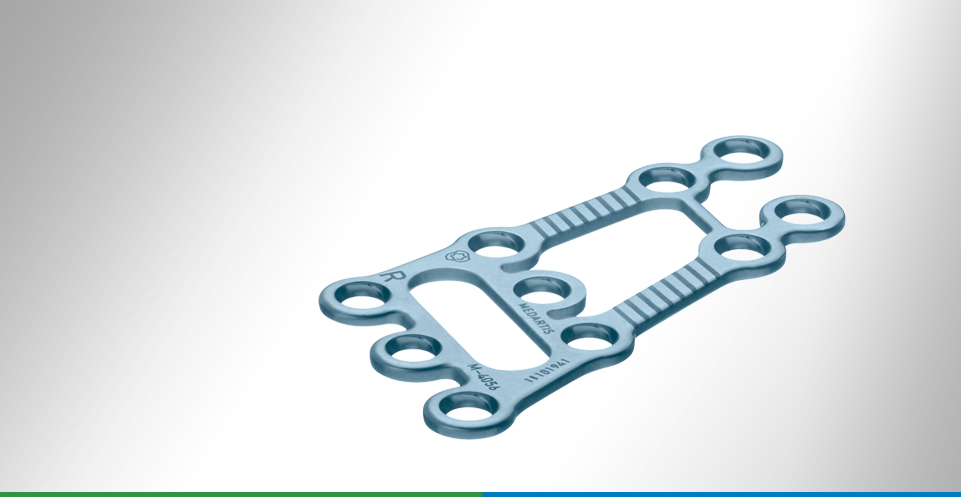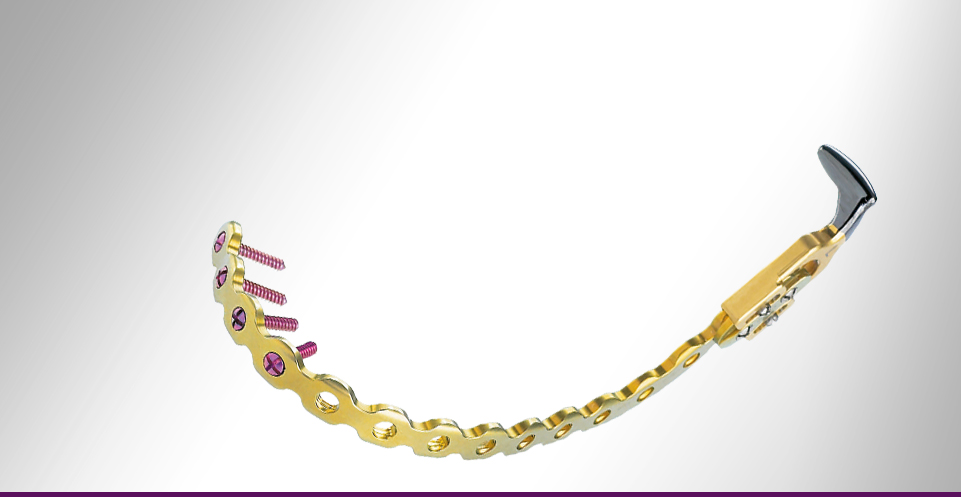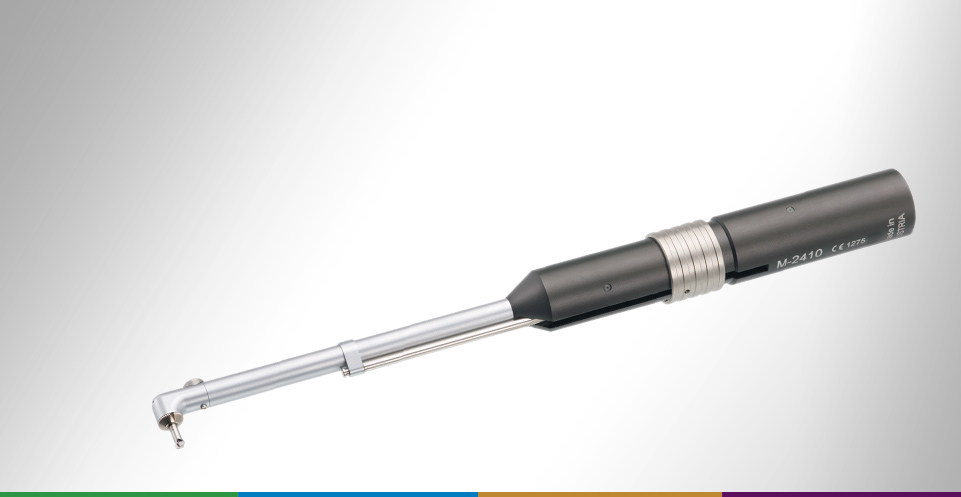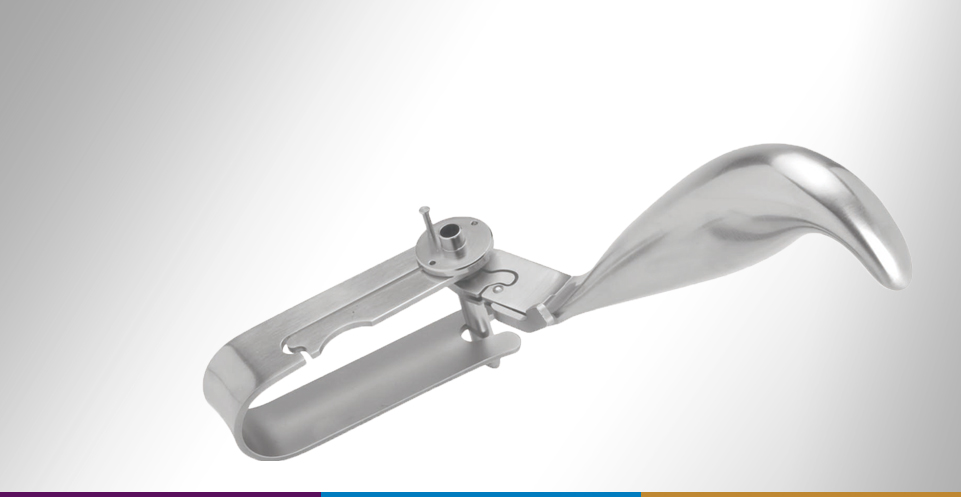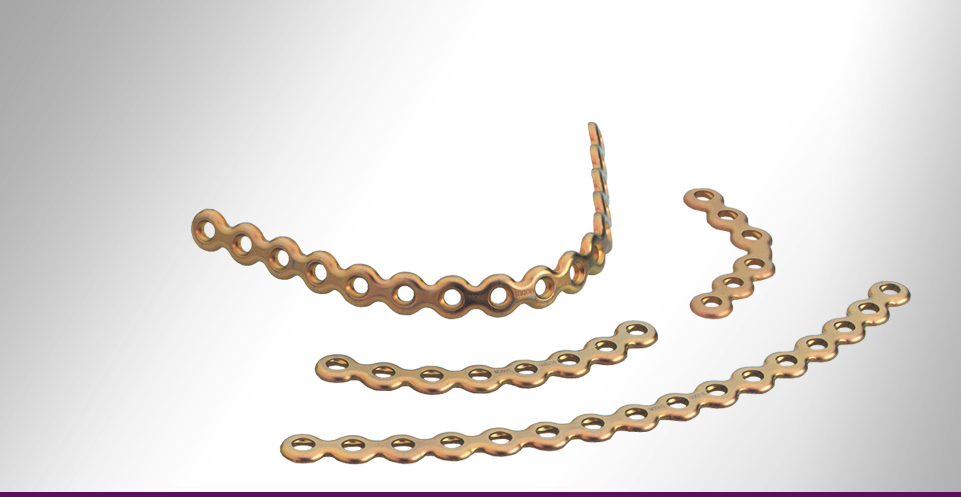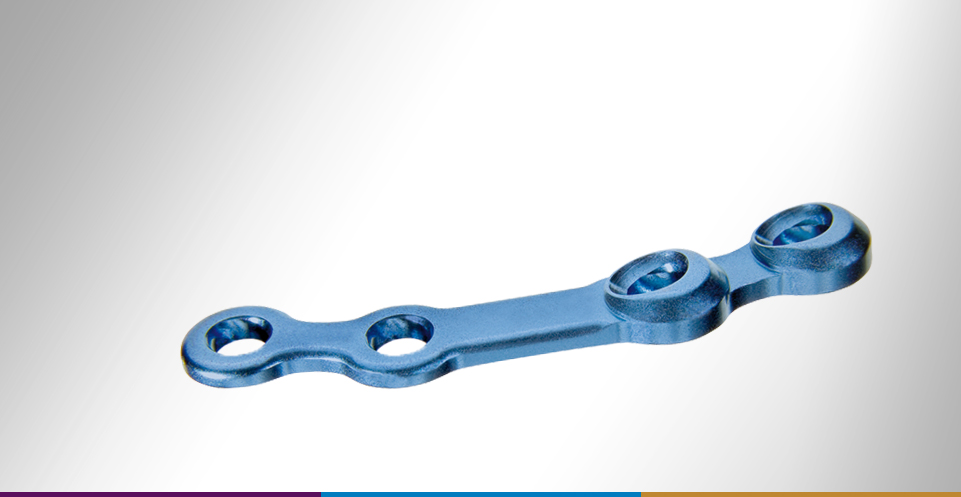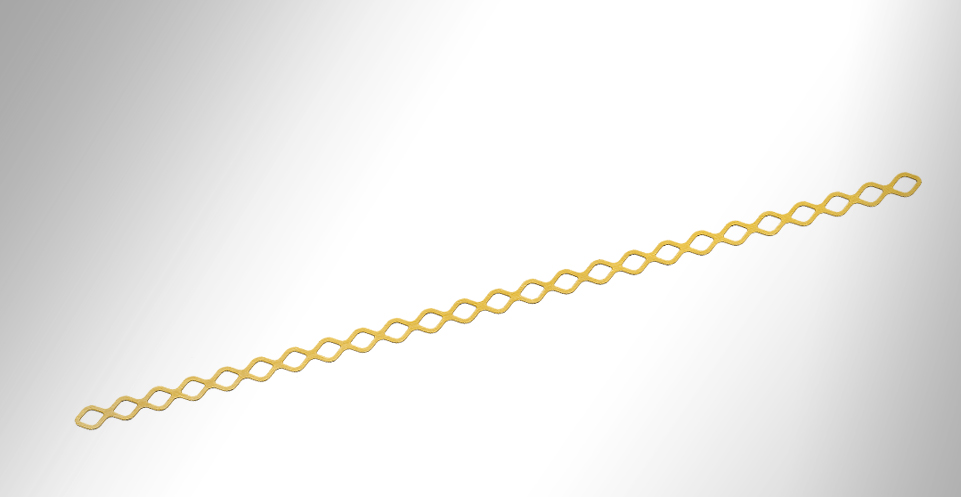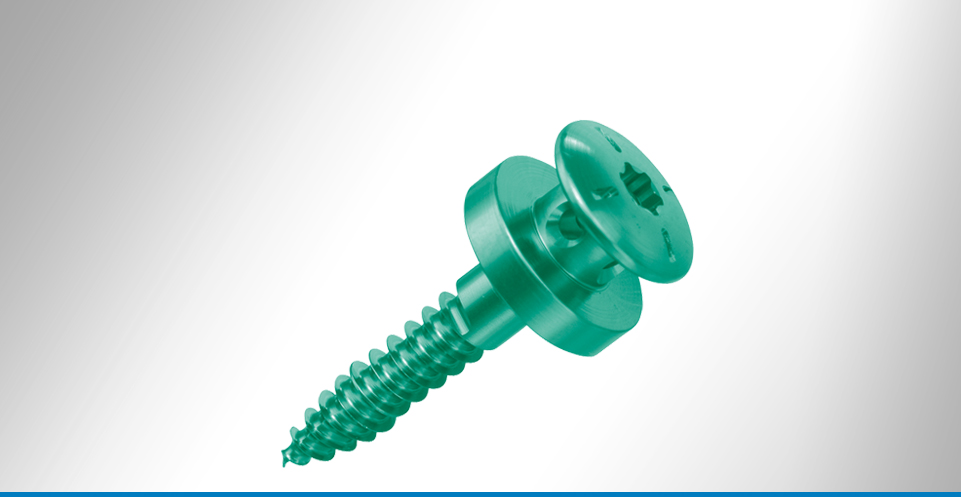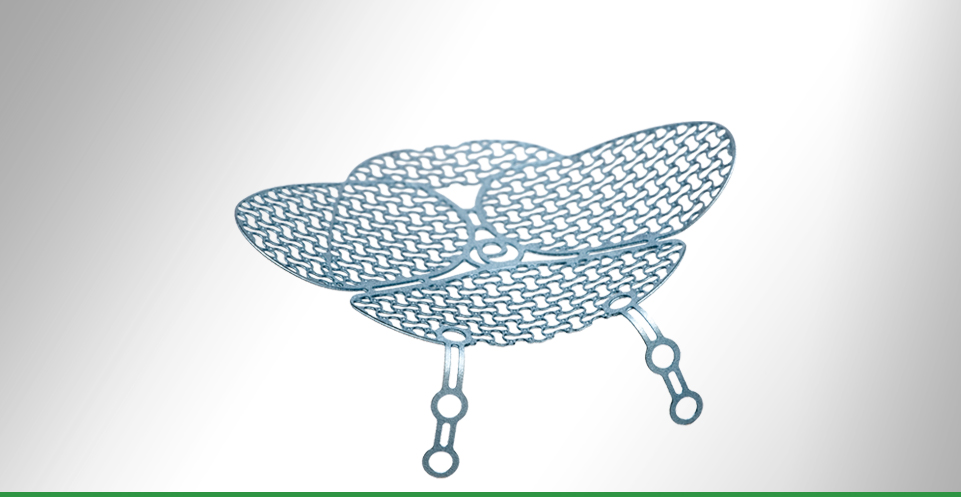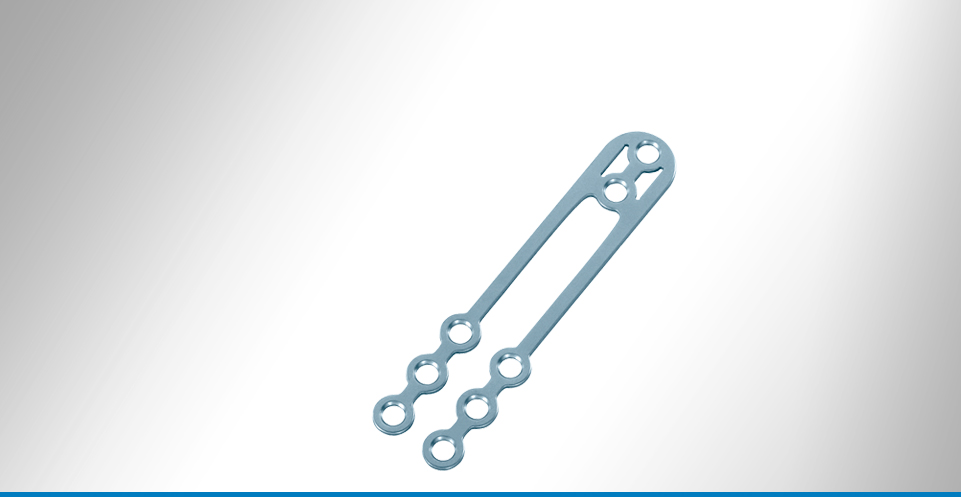Elbow
The elbow is a complex joint with several articulating surfaces where the humerus, the radius and the ulna meet. Stability is achieved by a high number of ligaments and muscles attaching at the elbow. Fractures caused by direct or indirect trauma are quite frequent and often intra-articular. They may involve several bones and are frequently associated with ligamental injuries. In these cases, the restoration of the initial function of the articulation is very challenging.
Because the elbow has a strong tendency to stiffen after injury, early mobilisation is paramount. This can often only be achieved by open reduction and internal fixation. Medartis is developing a comprehensive range of plates, carefully matched to the complex anatomy of the elbow. These implants take advantage of Medartis' innovative TriLock technology providing multidirectional angular stability, which is beneficial for the treatment of intra-articular fractures of the elbow.
Foot
With the APTUS Foot systems Medartis offers the user a choice of different multidirectional and angular stable product lines with implant plates in different designs, lengths and widths for a range of applications in the foot. APTUS Foot plates with TriLock technology are anatomically adapted for an optimal stabilization of fractures, arthrodeses and osteotomies of the tarsals, metatarsals and phalanges.
Hand
The hand is one of the most complex and most frequently utilized parts of the human musculoskeletal system. It is composed of a multitude of closely balanced structures, e.g. bones, muscles, ligaments, tendons, joints and nerves. The goal of hand surgery is to minimize the impact of hand diseases and injuries on daily activities and to restore and obtain as much function as possible.
Together with leading surgeons Medartis has developed the unique APTUS Hand fixation system for the management of fractures and arthrodeses of the phalanges and metacarpals. In order to meet the requirements of the delicate structures of the hand, the various plate designs are optimally adapted to the bone geometry. Materials, technologies, implants and instruments perfectly match all hand surgical issues. With the introduction of TriLock, Medartis was the first company to offer a fully modular multidirectional and angular stable hand fixation system – a trend that is becoming state-of-the-art in hand surgery.
Shoulder
A fracture of the proximal humerus is one of the most common fractures in the human body. Despite the achievement of good functional results in the fixation of these fractures, the rate of complications remains high.
The APTUS Proximal Humerus System 3.5 is a new treatment concept which offers additional support to reduce the risk of secondary varus displacement of the humeral head¹. It is the unique combination of anatomical plate design, TriLock multidirectional locking and an optional spiral blade device. This concept reduces the risk of secondary varus displacement even in fractures of the elderly¹. It allows surgeons treating proximal humerus fractures of different severities the choice of additional calcar support, specific for each patient, and the ability to address individual fragments with multidirectionality. Posterior fragments of the humeral head can be reached thanks to the anatomical plate placement, while the anterior twist of the implant shaft may offer protection of the deltoid insertion.
¹ Beirer M, Crönlein M, Venjakob AJ, Saier T, Schmitt‑Sody M, Huber‑Wagner S, Biberthaler P, Kirchhoff C:
Additional calcar support using a blade device reduces secondary varus displacement following reconstruction of the proximal humerus: a prospective study. European Journal of Medical Research 2015; 20:82
Wrist
The wrist is a multi-articular joint. It consists of the carpus, distal ulna and distal radius. Fractures of the distal radius are the most common fractures in the human body. In recent years, great changes have taken place both in the treatment options of the distal radius and the patient demands which have increased. As socioeconomic factors have become more relevant, a perfect anatomic reconstruction and a permanent reduction have been targeted together with virtually no postoperative immobilization and very early rehabilitation.
With the APTUS Radius fixation system Medartis offers a multidirectional and angular stable product line with implant plates in different designs, lengths and widths for a volar, dorsal and/or lateral approach. APTUS Radius plates with TriLock technology are anatomically adapted for an optimal stabilization of distal radius fractures and correction osteotomies as well as for arthrodeses.
Cranium
The calvaria and skullbase protect the brain from hits and traumatic injuries. If too much force is applied the skullcap fractures and leaves single bone fragments. They need to be repositioned to prevent dangerous effects on the brain.
With tumors, increase of the intracranial pressure and growing deficits of the skull osteotomies of the calvaria need to be done. For an aesthetic result an optimal approach is essential and therefore adapted instruments and a simple handling of the plates necessary.
Medartis offers with the MODUS systems for the neurocranial area a vast assortment of solutions for trauma and osteotomies. The surgeon can choose between flexible and rigid plates also with different heights. Each system contains further indications specific plates for optimal results.
Mandible
The mandible is the only movable part of the skull which, due to chewing, takes on a big amount of pressure. Therefore a functionally stable osteosynthesis largely depends on the nature of implant material. Since various degrees of pressure are applied to different parts of the mandible, it is particularly important to provide anatomically devised implants appropriate for these amounts of pressure.
Our MODUS range offers a variety of solutions for Trauma, Osteotomy, Distraction, and Reconstruction cases. The wide range of indication specific and locking plates allows a surgeon to choose a suitable implant for every patient. Medartis was the first manufacturer to launch polyaxial and multiple locking as well as angular stable implant systems for the mandible, thus setting high standards in the market.
Midface
The midface consists of a complex structure with different formed bone parts. Those bone parts can be separated for several reasons and need a treatment apt to the situation met. Fractures as well as osteotomies are with filigree and also stable bones. For an aesthetic result the number of suitable approaches is limited. Therefore, adapted instruments and a simple handling of the plates are vital.
Medartis offers with the MODUS systems for the midface a broad range of solutions for trauma and osteotomies. Thereby, the surgeon can choose between flexible and rigid plates also with different heights. Each system contains further indications specific plates for optimal results.
